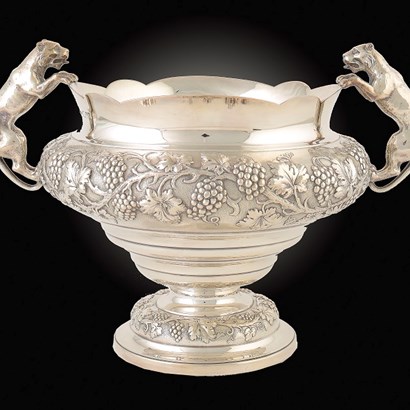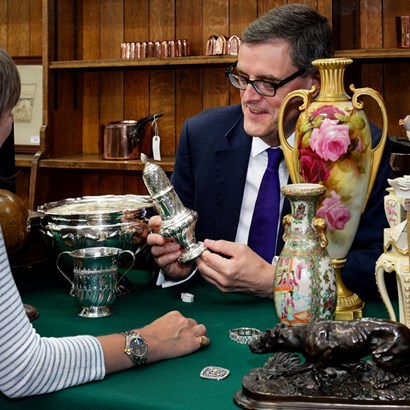Auction Insights
Lord Nelson
The greatest heroes are still human at heart and Nelson’s passion for his mistress Emma Hamilton is one of the greatest love stories in history, as a newly discovered letter proves.
A passionate letter from Lord Nelson on HMS Victory, sent only shortly before the Battle of Trafalgar in 1805 vividly conveys both the great man’s sense of longing for the love of his life, and his duty. That’s quite some duty when we consider the future of the nation and the peace of Europe rested solely on his shoulders, and he knew it.
The letter begins “My Dearest Emma” and he tells her that “We are hard at work victualing the fleet…” He was at this very time spending long hours in his lonely cabin formulating his unconventional and bold, but highly risky, battle plan for Trafalgar, a battle in which he would tragically die at the moment of his greatest triumph.
The bad handwriting is because Nelson had to learn to write with his left hand after he lost his right hand during a naval battle at Tenerife in 1797. He continues “May God be propitious to my wishes and send me a Victor to my dear dear dear Emma then and not till then can I be happy.”
Scholarship and the insight of historians make but poor substitutes for the thoughts and feelings that flow from the pen of great men and women when they write at pivotal moments in history with such raw, heroic emotion. It’s the genuine article because it’s expressed in their own words.
Nelson tenderly adds a postscript: “Kiss my dear Horatia for me” after which he signs it “Nelson & Bronte”. The Bronte was his title as he was created Duke of Bronte in the Kingdom of Scilly in 1799. At the time of this letter, Horatia, their only child, had just turned 4.
This letter is even more desirable than others by Nelson because it has never before been published. As early as the mid 19th century the majority of Nelson’s letters and his naval dispatches were published partly, I believe, because apart from all his other achievements he writes so beautifully.
Nelson relics have always been highly collectable as have, it has to be admitted, Napoleon’s and this letter, which is one of several, is worth £10,000-15,000. The late owner and his wife spent years reading all they could about him and collected all manner of Nelson memorabilia. After the triumph of the Battle of the Nile in August 1798, but especially following his death and again around the Trafalgar centenary in 1905, just about every manufacturer it seems produced Nelson souvenirs. Some are now very rare. How many bodkins I wonder with their minute commemorative inscriptions are to be found?
We have Nelson brass curtain-ties, enamel patch boxes (for ladies to beautify their faces with tiny star, crescent or other shaped patches), pottery, silver and bronze medallions, a group of fragile hand coloured glass pictures and there is also a very rare tiny silver Nelson vinaigrette, the grille of which is in the shape of HMS Victory. It alone is estimated at £800-1,200. Most of these treasures will go under the Mellors & Kirk hammer in March but if you can’t wait until then the National Maritime Museum (now known as Royal Museums Greenwich) has a “dazzling” exhibition, Emma Hamilton Seduction and Celebrity and is a must. It is open until 17th April. An actress, talented singer and great beauty, her charms captivated many in Regency England, not least the artist George Romney (1734-1802) for whom her face was an obsession. Other artists were less kind, notably the caricaturist Thomas Rowlandson (1756-1827).
Whilst there is some uncertainty about the exact nature of Nelson’s famous last words, this important letter leads me to suggest that Romeo’s final “Thus with a kiss I die” would make an excellent epitaph for him.
Only a few months after this letter was sent and Nelson’s death, Emma’s luck ran out. In his will Nelson had placed a heavy moral responsibility on the Government to provide for her if he were to be killed in action. In an act of supreme ingratitude, it ignored Nelson’s wishes. Emma did her best to preserve Nelson’s home as a memorial but was abandoned to live in poverty with her little girl. Pursued by creditors she fled to France (of all places) in desperation only to die there from dysentery in 1815. She was aged 49. In a cruel conjunction of chronology, only two years earlier in one of her most famous lines Jane Austen wrote that “We are all fools in love,” but about her writings I shall have more to say in next week’s Under the Hammer.
< Back to Auction Insights



